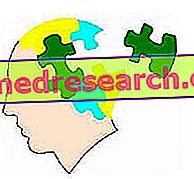
In the days following the birth, the newborn is subjected to an eye examination. The pupil is illuminated with light to assess its reaction to light and the red reflection of the retina (just like when taking a flash photo). This last test, in particular, provides indications concerning important anatomical anomalies; if it is absent, it could indicate the presence of a retinal tumor, a cataract or another congenital malformation, which if detected and treated early are easier to manage. Apart from this immediate check-up, the first complete eye examination should be done indicatively after 6-9 months of life, to be sure that there are no major problems. If everything goes smoothly, the next check should be made between 2 and 3 years . In this age group, the child is able to distinguish simple symbols and, if handled in a quiet manner, collaborates with the eye doctor, for whom it will be easier to assess the presence of any sight defects, such as amblyopia . Between the ages of 5 and 6, when the child goes to school, the eye doctor carries out an even more accurate eye check than the previous one: the child, in fact, in addition to recognizing drawings and letters, can interact with the doctor, answering his questions . In this way, the ophthalmologist can assess the visual function and correct any refractive defects ( myopia, astigmatism and hypermetropia ).
During childhood, in addition to the periodic evaluation of the ophthalmologist, the annual assessment of the pediatrician is also very important. The doctor, in fact, through a simple eye exam can intercept any ocular pathologies and, depending on the circumstances, can refer to a specialist.



